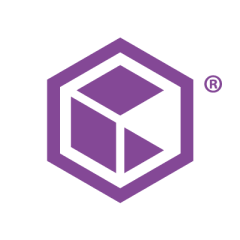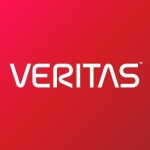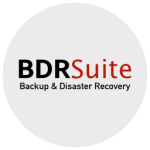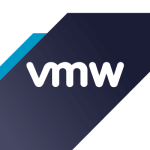What is our primary use case?
Back in July 2021, we migrated to Office 365. I am in the process of migrating users' mailboxes from on-prem to Office 365 in the cloud. In the initial design, there was no backup solution. Whereas, we back up all mailboxes twice a day onsite. I raised it with Senior Management that we need a backup solution for users' mailboxes.
Via Metallic, we are backing up Exchange mailboxes in Office 365, OneDrive, SharePoint, and Teams. Our presence for OneDrive and SharePoint is very minimal because we are still in the project phase. We have already migrated 100 mailboxes out to the cloud and further migration of another 600 users. We are in the process of scheduling that.
How has it helped my organization?
They gave us the option of where to store data. We chose UK data stores, which is called Storage U.K. South. It is really flexible. The best thing is that Metallic followed the model for Office 365. It is the same model, so we pay only for user mailboxes. We do not pay for shared mailboxes, which is really good. We don't have to buy four terabytes of space or anything. We are paying at a level of 750 users mailboxes to be back up and shared mailbox is free. More than 750 users and the price will reduce.
The backup runs automatically every eight hours. Therefore, there are three backups in a day. So far, we have never seen where the backups have over run. As far I am concerned, it is very good product, simple to restore and I would highly recommend it.
From the technical point of view, we have delta backups. Once a mailbox is migrated to Office 365, whatever the size is, it gets a backup fully once. After that, only delta changes get backed up. This is a really good solution because you don't use a lot of bandwidth since you are only changing deltas. There are no restore charges.
What is most valuable?
So far, for anything that gets backed up, it is good.
Restoring is very fast. In testing, I did a restore for a single item from a mailbox. Within a minute, I had the message back in my mailbox. So, it didn't take hours or days. Obviously, there will be a limit. If we suddenly go into DR and have to restore five terabytes of emails for people, then it will take a couple of days, which would be acceptable. For general usage, where we have to do the odd restore, we have never had issues. It happens within minutes.
It does back up Azure AD. This is a feature that we really haven't used. We have not had any issues with users or a group to run a restore. The option is there and if required the Azure AD Group object can be restored. I am sure if I tick on it, then it will restore that option back into Azure AD. This is an extra bonus that we got for free.
What needs improvement?
I am a consultant. Therefore, I have assessed the product, recommended it, and implemented it. I then hand it over to the BAU guys for the normal business day-to-day, as I work on projects. They do a Daily check. Unless in the last four weeks something has changed, we get four emails. One for each product: Exchange, OneDrive, SharePoint, and Teams. So, we are getting four backup reports.
It would be nice to have just one email report come in, then we can filter out failures. If everything is backed up, we really don't need to see the report. If it is in a single report. A simpler customised report would be good.
In the roadmap, they have something around reporting. They are aware that they need to improve it. It might already be there or we haven't set it up. However, in the last four weeks, which was the last time that we checked, we didn't see anything different.
For how long have I used the solution?
We set up the solution in November 2021. So, by November 2021, we were fully up and running.
What do I think about the stability of the solution?
The stability is perfect. Whenever I log in, it logs in. When I click on something, it loads up. So, I haven't seen any issues.
Sometimes, some dashboards take a bit of time to load but they have to go back and do queries, which is normal. It is your bandwidth and your Internet. When 700 users are logged onto our site, then our Internet will be a bit slower. When compared with our other products or anything else that I have used, the solution is sleek, fast, and smooth with no issues.
What do I think about the scalability of the solution?
We haven't been involved in any scalability. We just have a simple backup for our four products, and that's it. I am sure it is scalable since I can see in their dashboard that they use Dynamics 365, Salesforce, and do endpoints. However, we do not use any of those products.
The project has been handed over to a BAU (business as usual), which is a team of two server engineers who work with it. One of the engineer's jobs is to check the backups daily. That involves checking the Metallic backups. We set up an daily email, which they receive and can confirm the backup has run. Rather than log into a dashboard, look at figures. or go around looking for information, it is on their fingertips in the morning. It takes one minute and their job is done.
How are customer service and support?
We work through another partner for support. We work through them, and if they can't resolve anything, then it is escalated to Commvault directly.
Metallic support is direct. I have raised one ticket. One of my OneDrive folders was not backing up, so I raised a question. Before even half the day was gone, the problem was resolved.
I would rate them as a nine out of 10. I didn't get a very clear answer on exactly what they did to resolve the issue. I know they took the issue onboard and resolved it in a reasonable time, but it wasn't detailed technically enough for me about what was the actual issue. Why did it not back up those two folders in One Drive?
How would you rate customer service and support?
Which solution did I use previously and why did I switch?
We reached out to our partners, COOLSPIRiT, who engaged with Metallic and we setup a Demo. We all liked it because the solution is just simple.
We have Commvault for onsite backups. Commvault is used for on-prem mailbox backups, whereas Metallic is used for cloud backups of Office 365. We moved to Metallic as a SaaS backup solution.
How was the initial setup?
The initial setup was easy.
What about the implementation team?
COOLSPIRiT is our partner, so they set up the session with Metallic.
We had a Metallic consultant. He went through it step by step. I wanted to keep the control, because if I gave him the control, I literally would have put my feet up on the desk. There was not a lot to do. There was just the connectivity with Azure AD. The consultant does this day in, day out, so he just whizzed through it.
We had less than an hour-long session. If I wasn't slow with the mouse, we would have been done in half an hour. He was letting me drive and understand as he was explaining. We didn't even do the full hour session.
The Metallic consultant was nice and friendly. He explained what and why he was doing something. He also explained what our prerequisites are.
The prerequisites are very simple. You just need a O365 global admin account. Later on, it was removed. It is just for the initial Metallic and Azure AD connectivity.
What was our ROI?
Metallic has reduced the amount of manual work that we require to manage our backup operations. It is set and forget. It is actually one of those things. Usually when you set up a backup system, you need to sometimes work on it, do your daily checks, etc. Now, this solution is just set and forget. You receive a report telling you, "You are backed up."
Every day, if you do a daily check of backups, that could take anywhere from half an hour to an hour. So, it is probably saving us at least five hours a week.
If needed, we have Commvault on-prem backup solution for Exchange. Now, that has gone to the cloud. The good thing is we don't have to pay for bandwidth and hardware. We don't pay for licensing, operating systems, updating those systems, and having a team for it. Comparatively, there is a cost savings.
What's my experience with pricing, setup cost, and licensing?
We like that there is no extra cost for SharePoint, Teams, or OneDrive. It is all mimicking Microsoft's model. Every user has one terabyte of space. When users start using OneDrive, everybody has one terabyte that will be backed up included in the price.
Which other solutions did I evaluate?
We didn't actually physically evaluate another solution. Our biggest concern was that if we selected something like Veeam, Veritas Backup, or another backup company out there, we would then have had to change our backup systems since we are running Commvault. We wanted something similar to the Commvault product, or something they would recommend in their solution, as we are not ready to change from Commvault and go to another backup vendor's solution.
What other advice do I have?
Close your eyes and just go for it. it just works. I would highly recommend it.
I would rate the solution as 10 out of 10. I love criticising companies to find some fault or try to break the solution. That is what I was trying to do during testing. However, I couldn't pick up anything apart from reporting, where there is room for improvement. I am sure they can come up with something better for the reporting.
Disclosure: PeerSpot contacted the reviewer to collect the review and to validate authenticity. The reviewer was referred by the vendor, but the review is not subject to editing or approval by the vendor.

















